Columns
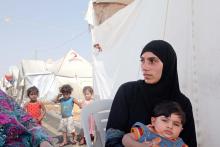
I wish I could sit beside you on a cushion on the floor and have a cup of tea with you. I would like to snuggle your baby in my arms. I would like to hear your story. I know you have a sad story, and if I heard it, I would weep.
I know you are good and loving women. I’m sorry you have lost so much. I’m sorry you had to come to a country, a city, and a house that is not yours.
I can imagine you in your own country, strong women serving others. I can imagine you making beautiful food and sharing it with your family and friends. I can imagine you caring for your mothers and daughters, fathers and sons, sisters and brothers and friends. Just the way I do.
Because that’s what women do. We are compassionate. We give. We serve. We protect. We work hard to make the world better for the people we love.
Wherever I go in the world, I discover that we women are very much alike. We may have different clothes. Different languages. Different cultures. Maybe our skin is a different color. But in our hearts, we are the same.
That’s why we can look into each other’s eyes and feel connected. We can talk without using words. We can smile. We can hug. We can laugh.
And sometimes, we can feel each other’s pain. I have prayed that God would help me feel your pain. I wish I could remove your pain. I wish I could help you carry it.
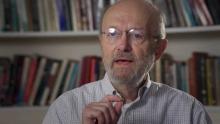
MY DEAR FRIEND Glen Stassen passed away on April 26. Glen was a key ally, a kindred spirit, and a deeply respected member of the Sojourners board. In my view, Glen was the most important Christian ethicist of his time because he taught us what it means to follow Jesus.
Many years ago a tall, thin, and very bright young man came to visit Sojourners community in Washington, D.C. He told us he was an ethics professor at Southern Baptist Theological Seminary, and that he wanted to live with us and volunteer serving the poor. Glen stayed in one of our households and served on our food line, distributing bags of groceries to low-income families just 20 blocks from the White House. From my first conversation with him to the last, Glen Stassen never stopped talking about Jesus—and how Christians must not just believe in Christ in word but also follow him in deed. His most influential book, Kingdom Ethics, co-authored with David P. Gushee, was also the passion of his life and work.
Before Glen became a professor, he had a promising career in nuclear physics. He loved his work, but he was not willing to work in weapons development so he left to attend seminary and become a biblical scholar. Eventually, Glen formulated a powerful vision of “just peacemaking.” Using the creative and critical practices of conflict resolution, Glen’s framework guides us toward effective and faithful actions to both prevent and end wars.
In everything he did, Glen sought to bring Christian ethics to public life. Working with Glen on the Nuclear Weapons Freeze Campaign, I quickly discovered that he was not just an ethics theorist but a gifted practitioner who knew how to mobilize movements and change public policy. As a true disciple of Jesus, Glen wanted to change the world.
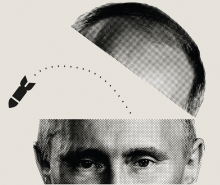
FOR MORE THAN two centuries, the United States has been the proudest example of democracy in the world. Maybe not the best, but definitely the proudest. Oh sure, we’ve hit some rough patches over the decades, mainly in dealing with our native peoples and other ethnic minorities. Also with women, the poor, the falsely accused, the unemployed, and people who aren’t bankers. But let’s just call those growing pains.
For the most part, America has been that shining city on a hill, and by America, of course, I don’t mean Canada or Mexico, or the other countries whose names I forget, most of which don’t have many good hills to shine from anyway.
But I’m not talking about geography, I’m talking about pride. The pride that comes from being number one in democracy, despite being number 55th in infant mortality and 35th in math. Okay, so we don’t test well. But we’re proud anyway. And we’re still number one in Bible science! [High five!]
But lately, because of continued dysfunction on Capitol Hill, people are starting to whisper that democracy in the United States may have lost some of its shine, like we’re “hiding it under a bushel,” as it says in the old Christian campfire song of my youth. (We also sang “With Jesus in My Boat I Can Ride Out the Current Economic Downturn,” and “Children, Go Where I Text Thee.”)
But if America’s “little light” is no longer shining, at least a few other nations are providing good examples of self-government.
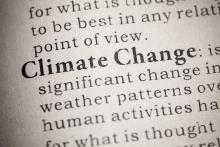
BAN KI MOON has summoned the world's leaders to New York in September to talk about the climate—and in the process he's also summoned all of us who care about the planet's future. We'll be there in record numbers, for the largest demonstrations about global warming yet—and there will be, I think, an unavoidable edge of anger. Because calling these guys "leaders," at least on this issue, is by now a joke.
Take President Barack Obama, for instance. He ran for office promising, in almost biblical terms, that during his administration "the rise of the oceans would begin to slow." Installed in office, he summoned environmentalists to the White House where his staff informed them that he wouldn't be talking about climate change: "Green jobs" tested better in focus groups.
And President Obama was true to his word. He hardly ever talked about climate change: He summoned no political muscle to back attempts at a climate bill in the Senate, and he watched as the Copenhagen climate talks collapsed, the biggest foreign policy failure in many years.
When Obama run for president in 2012, he made it through the whole campaign—during the hottest year in U.S. history—without even mentioning global warming. And while he delayed half of the Keystone pipeline, he "expedited" approval of the southern section, boasting that his administration had built enough new pipelines to wrap around the equator. He has modest decreases in carbon emissions to herald—and massive increases in oil and gas drilling. On his watch the United States will pass Russia and Saudi Arabia as a hydrocarbon source.

RECENTLY, the U.S. celebrated the 60th anniversary of the landmark Supreme Court case Brown vs. Board of Education that declared unconstitutional state laws establishing separate public schools for black and white students. By winning the Brown case, Thurgood Marshall broke the rock-hard foundation of racial barriers between black and white schools in the U.S.
But the civil right of equal opportunity for equal education never ensured the human right of equal access to it. Thus the explicitly racial divide, reinforced by law, was replaced by a close kin: the poverty divide, reinforced by economic blight entrenched by white flight to the suburbs.
Ten years later President Lyndon B. Johnson took a bulldozer to that new economic divide by declaring, in his January 1964 State of the Union address, an unconditional “War on Poverty.” He said, “Let this session of Congress be known as the session which did more for civil rights than the last hundred sessions combined.” And it did.
EVERY WAR HAS multiple fronts. Johnson’s fight against poverty was a legislative one, which played out in states, cities, and school districts across the country. Within two years Congress had passed the Civil Rights Act, the Food Stamp Act, the Economic Opportunity Act, and the Social Security Act. Each act was a legislative beachhead in the assault against U.S. poverty.
The Elementary and Secondary Education Act of 1965 represented a major shift in the way the U.S. conceived public education. In this act, Johnson took direct aim at the economic infrastructure that barred blacks and other impoverished people from accessing equal education.
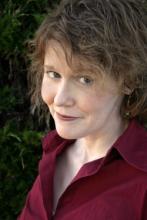
ELIZABETH PALMBERG—Zab to her friends—says her motto is “Cherish each moment, even the ones that suck.”
Nine years ago, she was diagnosed with Hodgkin’s lymphoma. She has had her ups and downs in her battle against cancer, but many moments in that journey have undeniably sucked.
In 2001, Zab was a college professor in California when she applied to be an intern at Sojourners. We decided her Ph.D. (in Victorian literature) perhaps qualified her to do the data entry and fact-checking work required of our editorial intern, and when her yearlong internship was over we invited her to become a full-time member of the editorial staff.
She’s been gracing us, and our readers, with her brilliant analysis and quirky wit ever since. Her knowledge, passion, and insight informed and often challenged those of us who’ve worked closely with her—and led to outside recognition as well. In 2011, for instance, Zab joined a Witness for Peace delegation to Colombia, visiting communities engaged in the difficult work of peacebuilding and conflict resolution. Her report on the trip—the last feature she wrote for the magazine—was honored by the Associated Church Press as the best news article of the year.
In November 2012, she wrote on her blog, “Just as I was planning a big six-year hey-they-cured-my-cancer party, it turned out I have cancer again.” Months of difficult treatment followed, and she chronicled the good times and the bad with (most of the time) her sense of humor firmly intact. For instance, she wrote that “technically, the exact wrong thing to read [during chemotherapy] is Thomas Hardy’s Jude the Obscure, which also happens to be the wrong thing to read in almost *every* context—that book really puts the “ick” in ‘Victorian.’ My deepest apologies to the one class I forced to read it. I don’t know what I was thinking.”

WE LIVE IN an age in which we are encouraged to make decisions that further our personal benefit. This attitude is so pervasive that it extends even to our spiritual lives.
There is a danger in making our faith so personal and inward, so focused on the first commandment to love God with all our hearts, minds, and strength, that we forget to keep the second commandment to love our neighbors as ourselves.
Though our culture would tell us to look out for number one, Christ’s upside-down kingdom offers a different and subversive message: Lose your life and you’ll find it. The church was designed to display the “manifold wisdom of God” by creating a community full of people who, like Jesus, put others before themselves and seek the common good. Christian community is intended to be a living witness, to demonstrate and to anticipate the future of the world that has arrived in the person of Jesus Christ.
In other words, it’s impossible to keep the second commandment without loving God with everything we have, but it’s also impossible to keep the first without loving our neighbors as ourselves.
A thriving common good and the quality of our life together are deeply affected by the personal decisions we all make. The commons—those places we come together as neighbors and citizens to share public space—will never be better than the quality of our own lives and households.
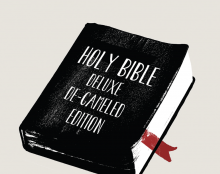
RESEARCHERS from Tel Aviv University recently announced a discovery that could shake the foundations of biblically based history currently taught in most states below the Mason-Dixon line (otherwise known as “Jesus Country,” unless Jesus comes back without a photo ID).
Granted, biblical controversies may not be the most important thing to you right now, when you’re coming up with this year’s excuse why your new beach body won’t be ready by Memorial Day. But we should never shirk from scholarship that could deepen our faith or, short of that, allow us to use the phrase “camel bones” for the first time in our lives.
To wit: Using carbon-dating techniques to determine the age of the world’s oldest-known camel bones, researchers have determined that camels could not have been the pack animals referred to in much of the Old Testament. At that time, camels had not yet been introduced to the region. It’s not clear if camel introductions were something that just wasn’t done in polite company or if the dearth of camels was only alleviated by Egyptian merchants establishing Mediterranean trade routes. But the latter would be my guess and is, in fact, the conclusion of the Tel Aviv researchers.
And it’s good we see eye-to-eye with the scientists on this particular issue, since their method is one I hold in contempt. I took it personally when carbon dating was used to disprove that the Shroud of Turin displayed the real image of Jesus Christ. I believed in the Shroud. When preachers would sermonize on faith the size of a mustard seed, I would smile condescendingly, because my faith was bolstered by something big enough to cover a good-sized twin bed! And with a picture of Jesus on it! (Much cooler than Justin Bieber or a Disney princess.)
I’ve never believed much in carbon dating since then. Speed dating, maybe. But not the other thing.
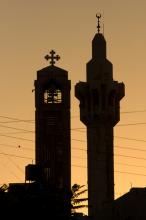
CAN YOU GO to school to become an interfaith leader? An increasing number of faculty, staff, and students on campuses believe the answer is “yes.”
Interfaith leadership courses are starting to crop up at colleges across the country. At New York University and Nazareth College, you can even get a minor in the area. The organization I lead, Interfaith Youth Core, recently organized a conference for university faculty interested in this area. We expected 30 people to show up, and got nearly 120. This all suggests that this may be a field whose time has come.
Academically speaking, “interfaith leadership” is part of the larger field of “interfaith studies.” Just as you might study education at a university to become a teacher, in the future you will be able to take coursework in interfaith studies in preparation for a career in interfaith leadership.
Interfaith studies looks at the myriad ways that people who orient around religion differently interact with one another and considers the implications of that interaction for everything from personal lives to global politics. It’s a field that asks questions such as: In what religious groups is the intermarriage rate growing fastest, and what are the distinctive dynamics of such relationships? What types of political arrangements seem to foster positive interaction between faith communities, and what types are associated with interreligious tension? How effective are current religious education programs in forming young people in faith traditions?
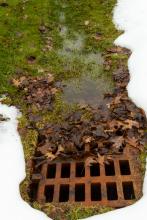
OUR LADY QUEEN of Peace church sits atop a low bluff overlooking the Army Navy golf course. This vibrant Arlington, Va. Catholic community has a history of staring hopelessness in the eye and declaring, “Not on our standing ground!”
Queen of Peace was founded by African Americans in the midst of virulent segregation. In the 1940s, Arlington’s black Catholics had to travel two hours by buses to attend a Mass where they were welcome. There was a closer church, but black Catholics were relegated to the back pew and prevented from receiving communion before whites. In 1945, 16 families pooled their money, hired a black real estate agent, and purchased small parcels of adjoining property under various names so as to not arouse suspicion. In an era when redlining and “neighborhood covenants” protected white enclaves and economic power, this was a courageous act. A little less than two acres—their standing ground—was purchased for $14,000. The bishop blessed Queen of Peace, Arlington’s first black Catholic congregation, on Pentecost Sunday 1947.
Now, nearly 70 years later, this multicultural community is asking a new question: With global temperatures rising and changes visible everywhere in nature, how do we face the truth of climate change?
During a speaker series in March focused on “the integrity of creation,” I encouraged them to overlap the ecclesial concept of “parish” with the ecological one of “watershed.” For life to persist, there must be living water. Scientists tell us that each watershed, no matter how small, is responsive to climate change. Since human activity has destabilized the climate, changing human activity is important in undoing the harm. And since the earth’s biosphere is made up of interlinked watershed communities, perhaps restoring our particular watershed is analogous to healing the earth at its “cellular” level, which would be a positive contribution.
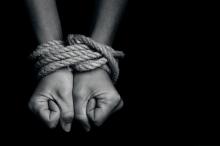
AN UNQUENCHABLE demand for sex, coupled with an endless supply of vulnerable children, creates a seemingly endless cycle of child exploitation.
During the Vietnam War, the U.S. Department of Defense contracted with the Thai government to provide “recreation and relaxation” for U.S. soldiers. Sex tourism was organized and expanded into a major industry. Today, sex tourism is a huge source of income for Thailand: The country remains a hub for tourists who can get anything they want at a very low price. Many children are trafficked into Thailand from surrounding countries or are fleeing military genocide. Others are pressured by their own family members to contribute to the household income. Uneducated and hopeless, these desperately poor boys and girls help feed the sex trade industry’s insatiable hunger for children.
A friend of mine recently traveled to Thailand. “I’d read books and watched documentaries about the sex industry in Thailand,” says Jennifer Laine VanBeek. “But nothing prepared me for Bangkok. Even beyond the red light districts, the sex trade is impossible to ignore. I was defeated by the sheer volume, the visible presence, the young ages of the exploited girls and boys, and how engrained it seemed to be in Thai culture.”
Jennifer visited Thailand—often called “Disneyland for Pedophiles”—with her Westmont College friend Rachel Goble, president of The SOLD Project, an organization that works to prevent child exploitation. Early in 2008, Rachel moved to Thailand’s Chiang Rai region, whose lush landscape and laughing children belie the harsh reality: Generations of women from this village have been and continue to be exploited by Thailand’s sex trade.

FOR THE PAST year, life in the Central African Republic has been steadily spinning out of control.
Since the Seleka—or “alliance”—rebellion overturned the government in March 2013, there has been widespread insecurity and chaos. The U.N. Office for the Coordination of Humanitarian Affairs has called the situation a "mega-crisis."
Though the rebel movement began as a coalition of 5,000 fighters from a few rebel groups, it is now thought to have increased to 20,000, and there are credible reports that as many as 6,000 youth have been recruited into violent movements. Since December, at least 2,000 people have been killed and more than 700,000 displaced. And now there are legitimate fears of ethnic and religious “cleansing.”
To say that this conflict is about religion is a simplistic narrative. Yes, right now people are banding together with others who are like them—Christians with Christians and Muslims with Muslims. But for more than 50 years prior to the conflict, Christians and Muslims in the Central African Republic (CAR) coexisted in relative peace. From the beginning of the conflict, there were political and regional forces at work, and the Seleka forces happen to be primarily Muslim. And in retaliation for the violence and fear that came with the rebellion and the mostly untrained and loosely organized rebel fighters, fighters who happened to be Christian formed the anti-Balaka (“anti-machete”) militias. These fighters, most would agree, are not the best representatives of either faith, but they have taken over the narrative, and it is the civilians—many families and children—who suffer.

I'D ALWAYS HOPED that the president’s “all of the above” energy strategy was a mere campaign slogan, a way to avoid riling anyone up as he ran for re-election. But he’s made pretty clear that it’s actually his guiding light.
“The all-of-the-above energy strategy I announced a few years ago is working,” he crowed in his State of the Union address. And indeed it is, if the goal is to drill, baby, drill. In Obama’s time in office, U.S. oil production has increased 50 percent; analysts estimate that by the time he’s gone in 2016, we’ll have literally doubled the amount of oil we produce in this country. The curve for natural gas production has been almost as steep, and though we’re burning less coal in our own power plants the amount we export has hit record highs.
In political terms, Barack Obama holds us environmentalists at bay with pretty words on climate change, but when it comes time to drill he’s the go-to guy. As he told a crowd of cheering oilmen in Oklahoma during the last campaign, “over the last three years, I’ve directed my administration to open up millions of acres for gas and oil exploration across 23 different states. We’re opening up more than 75 percent of our potential oil resources offshore. We’ve quadrupled the number of operating rigs to a record high. We’ve added enough new oil and gas pipeline to encircle the Earth and then some.”
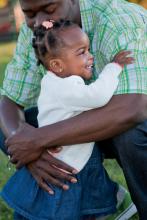
NEARLY 50 YEARS ago, the U.S. Department of Labor issued one of the most controversial and influential reports of our time, “The Negro Family: The Case for National Action,” aka “The Moynihan Report,” named after its author Daniel Patrick Moynihan. The March 1965 report offered our nation’s first comprehensive look at the roots of poverty in the African-American community 100 years after the Civil War. The picture wasn’t pretty.
Pointing to black poverty’s roots, Moynihan started with the hell that was the U.S. slave system: “American slavery was profoundly different from, and in its lasting effects on individuals and their children, indescribably worse than, any recorded servitude, ancient or modern.” Going on to quote Nathan Glazer, Moynihan illuminated the absolute powerlessness and dehumanization of enslaved black people under antebellum law and within the social structures of slavery.
Moynihan went on to examine the impact of the Reconstruction period, urbanization, unemployment, and inequitable wages on African Americans’ economic station in U.S. society. He concluded that the single greatest result of these forces was black families’ demise. And the single greatest result of this demise was entrenched poverty, according to Moynihan.
A 2013 Urban Institute report, “The Moynihan Report Revisited,” reflected that in the early 1960s Moynihan was alarmed that 20 percent of black children lived in single parent households with their mothers (not their fathers), but by 2010, 20 percent of white families lived in such households while 53 percent of black children were being raised by their mothers. According to the Urban Institute, fatherlessness in the U.S. has gotten worse, and it is no respecter of race.

SINCE THE 2014 election could be the most decisive political moment in a generation, the most important question is: Who will be Hillary's running mate in 2016?
The second big question is: What else does Chris Christie have to do to make other Republican presidential hopefuls slip back into the woodwork? What part of “you want a piece of me?” don’t they understand? Have they no fear of—just to choose something at random—major traffic delays in their districts? Are they currently enjoying their drinking water or other public utilities? Do they like their kneecaps?
A bit harsh, perhaps, especially regarding a man whose political obituary is already being written, and whose Wikipedia entry may one day not start with “45th president of the United States,” but with the phrase “Angry Birds spokesperson.”
But Chris Christie is a survivor. He may be only six Twinkies away from not being governor of New Jersey (assuming that he eats them all in one sitting), but he enjoys a strong approval rating and, at this writing, is still innocent of all accusations against him, including humility. His only real threats for the nomination are Paul Ryan and Jeb Bush, who is currently trying to be adopted by a family with a different last name.
The influence scandal that has roiled Christie’s staff and highlighted his strong negatives happened, after all, in New Jersey. And what happens in New Jersey stays in New Jersey because, for their own protection, witnesses tend to fugetaboutit.
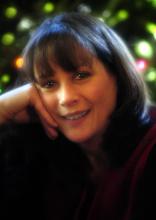
JOY CARROLL and I were married in 1997. A year later, we had our first son, Luke. We met at a delightful British festival of faith, the arts, and justice called Greenbelt. Joy—a Brit—was on the Greenbelt board and also one of the speakers, as was I. We were on a panel together in a tent with a couple thousand young people, and that’s where our relationship began. I had coffee with Joy afterward, and she told me about the long journey women had made toward ordination in the Church of England.
Joy had been trained as a priest at Durham, just the same as the men, but at that time wasn’t able to be ordained to the priesthood. Her first parish was in a housing estate (what we would call a housing project) in the middle of an impoverished neighborhood with lots of drugs and violence—a place where male priests were afraid to take their families. As a deacon, Joy moved in to live and work in the housing estate, doing everything a priest would do except celebrate the Eucharist, which was still reserved for males only. At age 29, she was elected to the church’s General Synod—its youngest member—and in November 1992 she cast a vote for women’s ordination. Joy went on to become one of the first women ordained as a priest in the Church of England.
When Luke was 4 years old, we found ourselves back at Greenbelt, again as speakers. Sunday morning is always a high point at the Greenbelt festival, with creative and powerful worship that draws most of the 20,000 in attendance. Joy was on the main stage as the chief celebrant of the Eucharist, while Luke cuddled on my lap, carefully watching his mother at the altar. He looked up at me and asked, “Dad, can men do that too?”
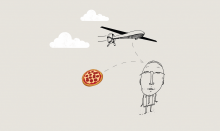
THIS YEAR IS shaping up to be one of enormous transition, although nothing specific comes to mind right now. I’ve just got this gut feeling. But the word that will best guide us through the coming changes may be “adaptation,” which my copy of the Merriam-Webster Dictionary defines as “the process of changing to fit some purpose or situation.” My copy of the dictionary also wants me to know how grateful it is to be picked up from behind the bookshelf where it had fallen years ago. It wedged against a hot-water pipe and got kind of u-shaped.
It actually felt good to look up something in hard copy, even if the pages were warm and wrinkled. But using Google is much faster, even subtracting the time it takes to first sing the alphabet song to remind me what order the letters are in. The point is, dramatic changes will be happening to our world, and we either adapt to them or die.
Okay, maybe not die. But when Brand New becomes No Turning Back, there’s no point in resisting. This year, for better or worse, “I don’t wanna” will become “but I hadda.”
My family has already started making the necessary changes. We have no fireplace in our home, since our house was built before the discovery of fire, and thus we have no chimney for Santa to come down. But last Christmas we adapted. We hung the stockings from the microwave, then left the door open and hoped for the best.
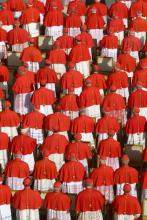
IN MINDANAO, Philippines, a cheer went up: Mayron tayong cardinal! (“We have a cardinal!”) In January, Orlando B. Quevedo, archbishop of Cotabato, was one of 19 new cardinals named by Pope Francis.
Cardinal Quevedo rose from newsboy to archbishop. He’s renowned for his interreligious work and cofounding a Catholic-Muslim peace community in the southern Philippines where there is violent ethnic conflict. Quevedo is a leader in the Federation of Asian Bishops’ Conferences, a body representing more than 100 million Catholics that has courageously pushed forward the values of Vatican II amid traditionalist backlash.
During a papal conclave, when a new pope is chosen, much of the world, Catholic and otherwise, pays close attention to the news ticker from the Vatican. For the selection of new cardinals, not so much. But with Francis, everything bears watching.
Historically, cardinals were called “the princes of the church” because of the power they wielded. Functionally, they serve in the College of Cardinals, which meets with the pope to deal with questions of major importance and elects new popes. Sadly, scoring a red hat has been for some the acme of clerical ambition. The season of cardinal picking can devolve into extravagant indulgence.
But, there’s a new sheriff in town: Pope Francis wants deputies, not darlings.
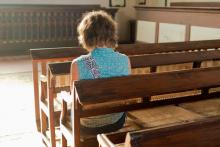
THIS IS NOT a column full of hand-wringing about the moral decay of U.S. society. Nor is it about my concern for the souls of my fellow citizens who are atheists, agnostics, or some other stripe of nonbeliever. I am worried about the growing number of religious “nones” in the United States, but not for those two reasons.
Let me be clear about something before continuing: Many of the people I love and admire most are religious “nones”—those who indicate “none of the above” on religious preference surveys. They include people of high intellect, great sensitivity, and deep character. In fact, many of them could give lessons in such areas to some of the religious people I know.
What they do not do is build hospitals, schools, colleges, or large social service agencies. Such institutions (when not built by the government) have generally been founded and supported by religious communities in the United States. This is not so much because religious people are always better human beings; it’s because religious communities value and organize such work at significant scale.
Religious communities play a profound role in U.S. civil society. About one out of every six patients in the U.S. is treated by Catholic hospitals. Most, if not all, have some sort of explicit commitment to serving the poor because of their faith identity. There are nearly 7,000 Catholic grade schools and high schools in the U.S., and more than 260 colleges. This is to say nothing of the refugee resettlement, the addictions counseling, or the services for homeless men and battered women provided by Catholic social service agencies.

“GOD CREATED the world and we created borders.”
That obvious recognition was shared at a recent consultation in Quito, Ecuador, between North American and Latin American churches on “Faith, Economy, and Migration.” Felipe Adolf, president of the Latin American Council of Churches, shared that conclusion on how issues of migration and reform are global and not just local.
It’s very easy to see the problems confronting our nation and feel as though the challenges facing the rest of the world are simply too much to bear. Continuing poverty and unemployment, discrimination of all kinds, and wars and rumors of wars fill our newsfeeds, papers, and TV screens. But it’s naïve and narrow to think this way. Many of the threats we face are global in nature and don’t know any boundaries. Through our economies and consumption habits, media, travels and migrations, and for Christians in particular our faith, we are inextricably connected with men and women around the world. It’s always been important, but now especially so, to think globally when it comes to faith and justice.
Sojourners has a long history of doing this very thing. We started as a little group of two kinds of people—those who had grown up conservative evangelicals and were deeply frustrated with the lack of attention to issues of justice and peace, and those who had just come to faith from the student movements and counterculture of the 1960s and ’70s. We met at Trinity Evangelical Divinity School and began to study and pray through the scriptures about injustice, war, and poverty. The Vietnam War was raging, and we were looking for a biblical understanding of the events of our time.